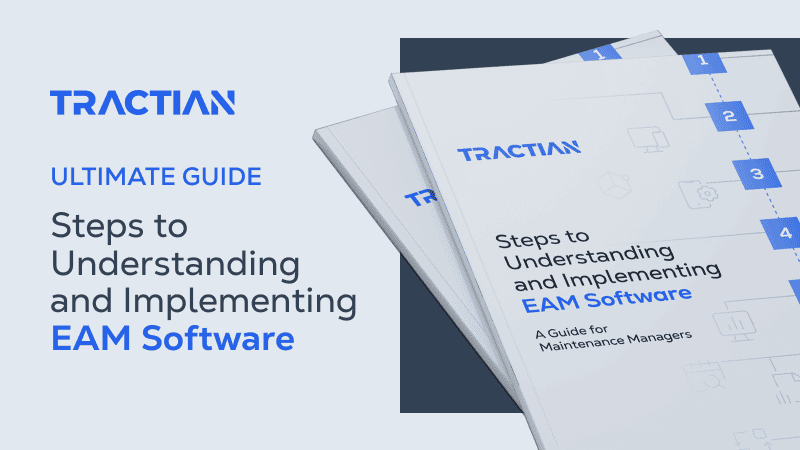MRP and ERP might seem interchangeable. After all, they’re often mentioned in the same breath. But that’s part of the problem.
Both help manage operations, and both aim to reduce waste and improve efficiency. But if you’re making strategic decisions based on that surface-level understanding, you’re missing what really sets them apart.
MRP (Material Requirements Planning) is built for one thing: making sure production never halts because of a lack of parts. It calculates what’s needed, when it’s needed, and how much of it is required to meet demand.
ERP’s (Enterprise Resource Planning) scope is much broader. It connects every core process in a company under one unified system.
Here’s why this difference matters: understanding the exact difference between MRP and ERP isn’t just useful, it’s critical for manufacturers that want to stay competitive.
But where does each system fit in your operations? Here’s how to decide which one (if not both) is right for your business.
What is an MRP System?
An MRP (Material Requirements Planning) has one function: To ensure production doesn’t stop because parts are missing.
At its core, MRP helps manufacturers answer three fundamental questions:
- What do we need?
- How much do we need?
- When do we need it?
It does this by analyzing your Bill of Materials (BOM), checking current inventory levels, and factoring in lead times. Based on that, it generates a schedule for raw materials and components.
This helps teams stay ahead of shortages and reduce overstocking.
The original MRP systems emerged in the 1960s and were focused purely on materials planning. Over time, MRP II came into play, integrating production planning, shop floor control, and even capacity planning. But even now, MRP is all about production inputs. It’s not built to handle day-to-day maintenance workflows.
What is an ERP System?
ERP (Enterprise Resource Planning) systems take a much wider approach to operations. While MRP ensures production gets what it needs, ERP connects that entire process with the rest of your company. It integrates finance, procurement, inventory, human resources, project management, customer orders, and even MRP into a single system.
Think of it as the nervous system of your entire enterprise. When implemented right, ERP gives every department visibility into shared data. That means maintenance can see procurement timelines, and operations can align production with supply chain constraints, all from one platform.
ERP systems evolved from MRP. Once businesses realized the same structured logic could be applied to other functions beyond manufacturing, the software expanded. Now, these platforms support large-scale business processes with capabilities that reach far beyond the shop floor.
What is the Relationship Between ERP and MRP?
MRP and ERP are two sides of the same coin. Simply put, one feeds into the other.
Think of MRP as a specialized tool focused on the nuts and bolts of production. Meanwhile, ERP takes that information and makes it actionable across departments.
In most ERP systems, MRP is actually a built-in module. This means you can manage materials planning directly within a larger ERP environment, with real-time updates flowing across inventory, finance, purchasing, and maintenance teams.
Here’s where this connection becomes critical on the plant floor: if your MRP identifies a shortage in a key component, the ERP system can trigger purchase orders and alert the finance team automatically.
And because everything is tied together, maintenance teams can also see if a delayed component will affect a critical repair or overhaul.
This relationship allows manufacturers to:
- Avoid communication gaps between production and procurement
- Eliminate silos between operations and finance
- React quickly to demand changes
What is the Difference Between ERP and MRP?
The main difference between MRP and ERP lies in their scope. MRP systems are built to answer one operational question: Do we have the materials we need to keep production going? ERP systems go far beyond that. They connect departments and provide a unified platform for managing the entire business.
MRP: Focused on Production Execution
Material Requirements Planning systems are purpose-built for manufacturing. For production planners, that means fewer delays and smoother production cycles. But that’s the extent of it. MRP systems don’t track purchase approvals or manage suppliers, for example.
ERP: Designed for Business Integration
ERP takes the same core logic as MRP but applies it across every department. In an ERP system, material shortages impact procurement. Procurement impacts financials. Financials feed into strategic planning. And maintenance? That’s tied directly to asset availability and spare parts usage.
What sets ERP apart is its ability to turn localized actions into coordinated outcomes. If a part delivery is delayed, ERP doesn’t just update inventory, it:
- Notifies the planner
- Flags the supplier
- Adjusts the financial forecast
- Reschedules impacted work orders
That level of synchronization is what enables real-time, cross-functional decision-making.

Why the Difference Matters in Industrial Operations
In smaller environments, MRP systems often get the job done. They’re fast to implement and focused on solving one of manufacturing’s most basic challenges-having the right materials at the right time. But as operations grow, that narrow scope becomes a limitation.
ERP systems are built for scale. They give companies the control and transparency they need when managing large fleets of assets or cost-sensitive operations. And for maintenance teams, ERP’s value goes even deeper.
It links spare part consumption to preventive maintenance plans, tracks downtime impacts on production, and helps teams plan resources in the context of business goals, not just technical ones.
ERP Includes MRP, But MRP Doesn’t Include ERP
MRP exists as a component within many ERP platforms. But it’s just one part of a much larger ecosystem. ERP doesn’t replace MRP, it absorbs it-then expands its impact across the entire organization.
When every team operates from the same system, the results are more predictable, more efficient, and easier to scale. And for manufacturers who want full control across their operation, that difference is critical.
MRP as an ERP Module
In ERP systems, MRP is one of several modules embedded into the platform, and that integration changes everything.
Instead of being siloed in the production planning department, MRP becomes part of a larger operational engine. Material requirements are no longer calculated in isolation, they're tied directly to procurement timelines and other key levers.
Together with other ERP functions, it creates a single source of truth that gives every team access to the same real-time data.
This shift from standalone MRP to embedded MRP matters because it eliminates fragmentation. When production planners generate a new material plan, the system can immediately trigger the right actions.
For example, maintenance supervisors can see if a part required for an overhaul is already accounted for in a pending order. Everyone stays on the same page, no email chains required.
And there's another advantage too: planning accuracy. Because ERP systems pull data from across the business, MRP can work with better inputs. This means lead times are updated automatically based on supplier performance, and inventory counts reflect actual usage, not outdated estimates.
That level of data quality makes MRP outputs far more reliable.
3 Key Benefits of Integrating Your Manufacturing ERP with an MRP
When MRP and ERP work together in a single system, operations shift from reactive to predictive. You're not just processing orders or managing parts, you’re precisely coordinating every moving piece of your operation. And that’s where you start to see even more value, like:
Staying Ahead of Demand
When demand changes, you can’t afford lag time. Whether it's a spike in customer orders or an unexpected shortage of raw materials, response speed makes the difference between growth and disruption.
An integrated MRP inside an ERP system doesn’t just react, it anticipates, monitoring demand forecasts in real-time and adjusting procurement plans accordingly.
That way, your team is always working from up-to-date data, so production doesn’t get caught off guard.
Streamlining Your Operations
Disconnected systems drain productivity. Too many disconnected tools lead to mistakes, and teams end up spending more time chasing updates than solving problems.
With ERP and MRP fully integrated, everything happens in sync. The moment production plans change, material requirements are recalculated. When a part gets used in a maintenance task, inventory levels update automatically.
Purchase orders, supplier delivery dates, and more all flow through the same platform.
That level of synchronization keeps your entire operation on track.
Exceeding Your Customers’ Expectations
How well your operations perform reflects how your customers perceive you. Production delays don’t just cost money, they cost trust.
By combining MRP’s planning power with ERP’s visibility and coordination, you can deliver with more consistency. And when changes do happen, teams can adapt without compromising delivery commitments.
ERP vs. MRP: Which System Does Your Business Need?
Choosing between ERP and MRP isn’t about which one is better, but which one fits your current goals.
If your main challenge is materials planning, then MRP might be all you need. It’s lean, focused, and built specifically for that purpose.
Smaller manufacturers (or those early in their digital transformation) often find that a dedicated MRP system is the most practical starting point. It helps them get control over a few foundational things without an overcomplicated adoption process.
But as operations grow, ERP becomes more and more essential.
When your maintenance team needs to coordinate with procurement, or when finance wants real-time visibility into inventory costs, MRP alone can’t keep up. ERP systems are designed for that level of complexity.
The tipping point usually comes when siloed tools start creating more problems than they solve. Maybe you’ve got maintenance logging parts usage in one tool, while procurement uses another, and no one sees the big picture. That’s when teams realize they don’t just need better material planning, but unified operations.
Still, this isn’t an either/or decision for many companies. In most cases, it’s a phased approach. MRP is the first step toward structured operations, then ERP comes nextonce cross-functional integration is necessary for growth.
How Tractian Enhances ERP and MRP Systems
Whether you’re using MRP to manage material flow or ERP to coordinate your entire business, one thing will always be true: both systems depend on accurate, real-time data to deliver results. That’s exactly where Tractian’s value becomes undeniable.
ERP and MRP platforms are only as strong as the information fed into them. But all too often, that data arrives late, or doesn’t arrive at all, and those gaps create blind spots that ripple through production.
Tractian closes those gaps by turning static ERP/MRP processes into dynamic, data-driven operations.
Instead of waiting for failure reports, teams see trends before breakdowns happen. No more reacting to missing parts, because inventory gets updated the moment components are consumed. And no more relying on assumptions, because your decisions are backed by actionable insights.
And this doesn't require a full system overhaul, either. Tractian strengthens the systems you already use, adding depth to your MRP and intelligence to your ERP. It makes disconnected maintenance logs part of a continuous asset lifecycle. It brings equipment behavior into the conversation around production reliability.
In other words, it doesn’t replace your existing infrastructure, it makes it better.

![What Is The Difference Between MRP and ERP [Full Guide]](https://ghost-imgix.tractian.com/2025/05/whats-the-difference-between-mrp-and-erp-full-guide.png?auto=format%2Ccompress&cs=origin&fit=max&q=75&w=1200)

